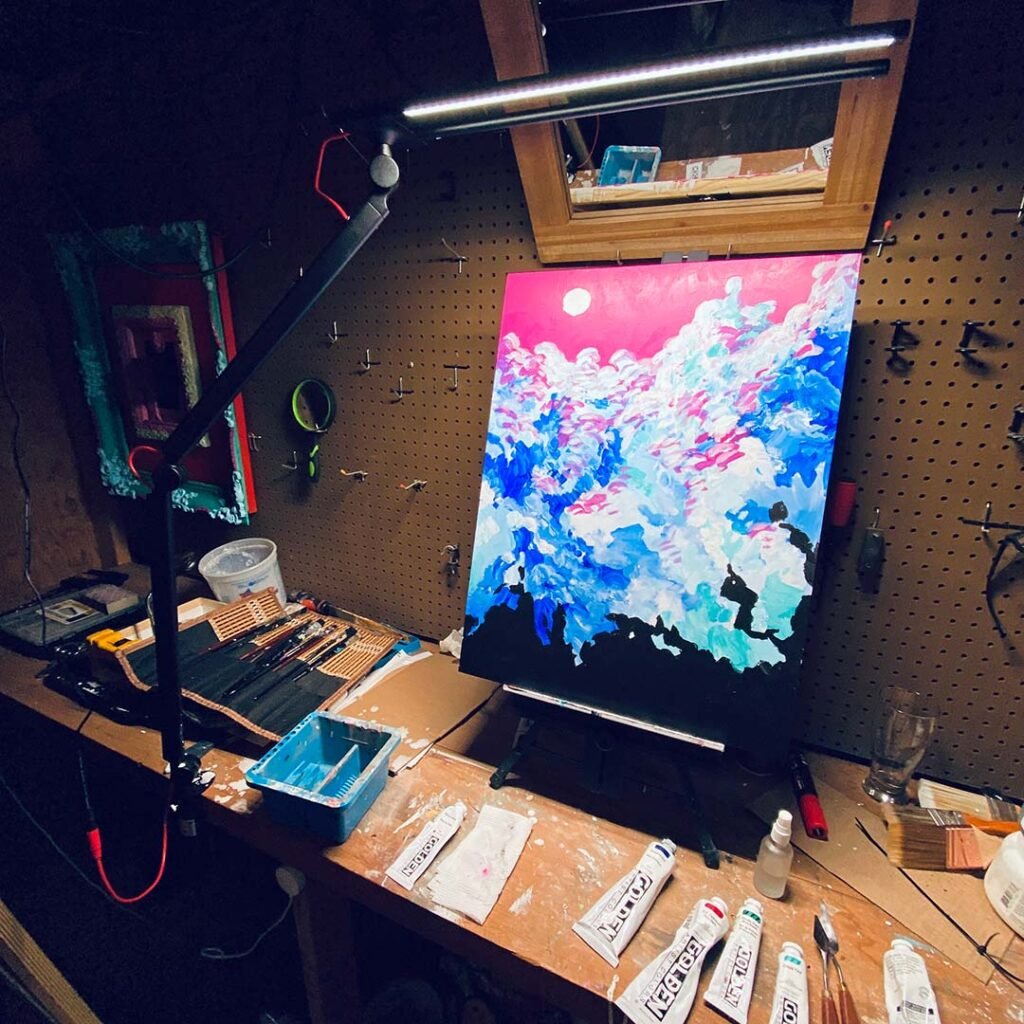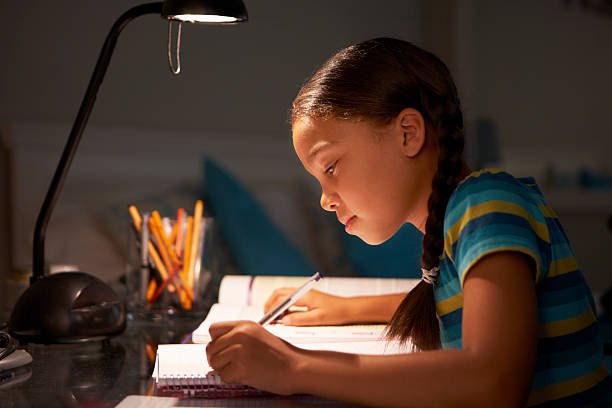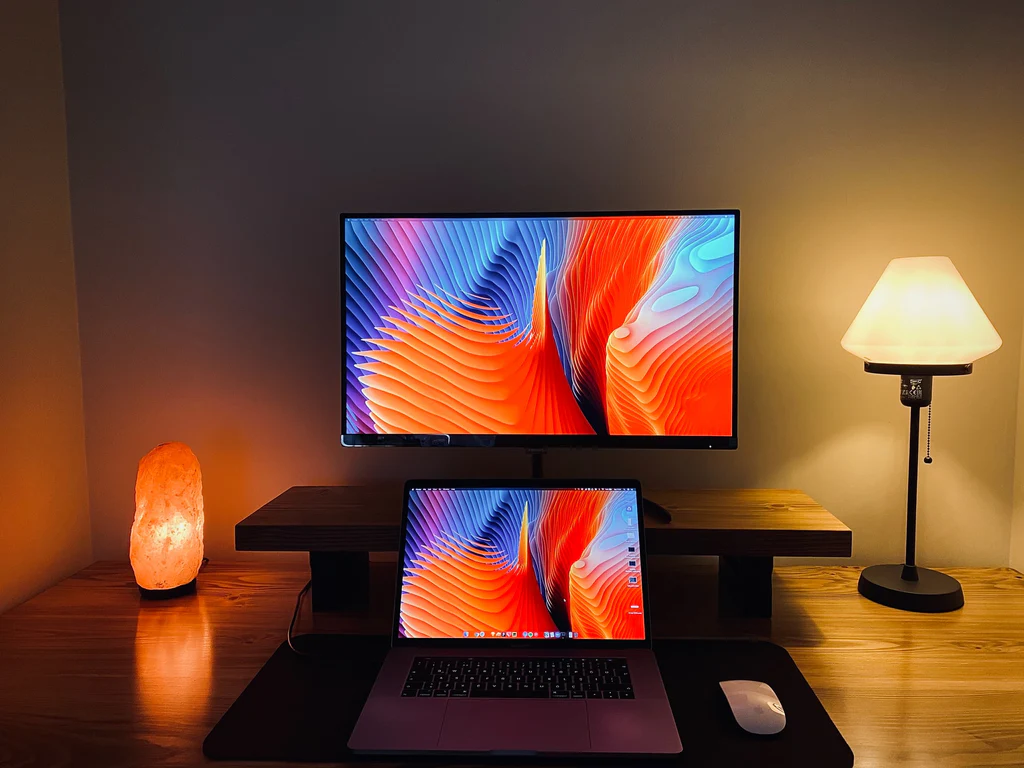When it comes to creating art, lighting is a crucial element that can significantly impact the quality of your work. Whether you are a professional artist or simply enjoy drawing as a hobby, having the right desk lamp can make a world of difference in your creative process.
The best desk lamp for drawing provides adequate illumination, reduces eye strain, and enhances color accuracy, allowing you to work for extended periods with comfort and precision.
Key Features to Consider
Before investing in a desk lamp for drawing, it’s essential to consider the key features that will best support your artistic endeavors. Here are some important factors to keep in mind:
Light Intensity and Color Temperature
Optimal light intensity and color temperature are critical for creating art with accuracy. Look for a desk lamp that offers adjustable brightness levels to suit different drawing tasks and ambient lighting conditions.
Additionally, consider the color temperature of the light, as it can influence how colors appear on your artwork. A lamp with a color temperature in the range of 5000-6500 Kelvin is ideal for providing a neutral white light that closely simulates natural daylight.
Adjustability and Flexibility
Artists often require precise lighting angles and positions to eliminate shadows and glare. A good desk lamp for drawing should be adjustable and flexible, allowing you to direct the light exactly where you need it.
Look for lamps with swivel arms, adjustable necks, and rotating heads to achieve optimal illumination for your creative work.
Eye Protection and Glare Reduction
Prolonged periods of drawing can strain your eyes, leading to discomfort and fatigue. To prevent this, choose a desk lamp that incorporates features for eye protection, such as flicker-free LED technology and glare-reducing diffusers.
These features help minimize eye strain, allowing you to focus on your artwork for longer durations without experiencing discomfort.
Energy Efficiency and Durability
An energy-efficient desk lamp not only reduces electricity costs but also contributes to environmental sustainability. LED desk lamps are a popular choice for artists due to their long lifespan, low energy consumption, and minimal heat emission.
When selecting a lamp for drawing, prioritize models that are durable and built to withstand the rigors of artistic work.
Top Recommendations for the Best Desk Lamp for Drawing

Now that we understand the essential features to look for in a desk lamp for drawing, let’s explore some top recommendations that meet the criteria for providing exceptional lighting for artists:
1. Daylight Company Naturalight LED Task Lamp
The Daylight Company’s Naturalight LED Task Lamp is a favorite among artists for its outstanding performance and functionality. This lamp offers a high-quality, natural light effect with a color temperature of 6000 Kelvin, providing excellent color rendering for accurate depiction of artwork.
Its adjustable neck and rotating head enable artists to position the light precisely, while the energy-efficient LED technology ensures long-lasting illumination without generating excessive heat.
The lamp’s sleek design and sturdy build make it a reliable companion for artists seeking the best lighting for their drawing endeavors.
2. BenQ e-Reading LED Desk Lamp
For artists who value versatility and eye comfort, the BenQ e-Reading LED Desk Lamp is an excellent choice. This lamp features adjustable brightness and color temperature settings, allowing artists to customize the lighting to suit their specific preferences.
With its built-in ambient light sensor, the lamp automatically adjusts its brightness based on the surrounding environment, providing consistent illumination without glare.
The e-Reading LED Desk Lamp’s innovative design and eye-care features make it an ideal lighting solution for artists who prioritize both functionality and visual comfort during extended drawing sessions.
3. TaoTronics LED Desk Lamp with USB Charging Port
Combining modern convenience with artistic functionality, the TaoTronics LED Desk Lamp is a versatile option for artists seeking a multi-purpose lighting solution.
This lamp offers adjustable color temperatures and brightness levels to accommodate various artistic tasks, from detailed drawing work to sketching and shading. With its integrated USB charging port, artists can conveniently power their devices while working on their art.
The lamp’s contemporary design, flexible adjustments, and eye-friendly lighting make it a valuable addition to any artist’s workspace.
Conclusion
Investing in the best desk lamp for drawing is a decision that can significantly enhance your artistic process and the quality of your artwork.
By prioritizing features such as light intensity, adjustability, eye protection, and energy efficiency, artists can find the perfect lighting companion to support their creative endeavors.
Whether you prefer the natural light effect of the Daylight Company’s LED Task Lamp, the customizable illumination of the BenQ e-Reading LED Desk Lamp, or the modern versatility of the TaoTronics LED Desk Lamp, there are excellent options available to elevate your drawing experience.
Ergonomic Design for the Artist’s Workspace
In addition to the right desk lamp, the overall ergonomics of an artist’s workspace play a crucial role in their productivity, comfort, and long-term health.
Maintaining proper posture and a well-designed workstation can make a significant difference in the quality of an artist’s creative output and the sustainability of their practice.
Optimal Desk and Chair Setup
The foundation of an ergonomic workspace begins with the desk and chair. Artists should choose a desk that is the appropriate height, allowing them to comfortably reach their drawing materials without straining their shoulders or neck.
The desk should also provide ample surface area to accommodate their drawing tools, sketchbooks, and other necessary items. As for the chair, it should offer excellent lumbar support and adjustability to ensure proper spinal alignment and prevent back pain during extended drawing sessions.
Proper Posture and Positioning
Maintaining good posture is essential for artists to avoid muscle fatigue, headaches, and other physical discomforts. When seated at the desk, artists should keep their feet flat on the floor, with their thighs parallel to the ground and their elbows at a 90-degree angle.
The drawing surface should be positioned at a slight incline, allowing the artist to maintain a natural, upright posture while working. Regularly taking breaks to stretch and move around can also help alleviate the strain of prolonged drawing.
Ergonomic Drawing Tools
In addition to the desk and chair setup, the choice of drawing tools can also impact an artist’s comfort and efficiency. Ergonomically designed pencils, pens, and other drawing implements can reduce hand fatigue and strain, enabling artists to work for longer periods without discomfort.
Look for tools with contoured grips, lightweight construction, and features that promote a natural, relaxed hand position.
Optimizing the Workspace Layout
The arrangement of an artist’s workspace can also influence their productivity and well-being. Ensure that frequently used items, such as drawing supplies and reference materials, are within easy reach to minimize unnecessary movements and strain.
Consider the placement of the desk, lamp, and other equipment to minimize glare, shadows, and obstructions that could interfere with the creative process.
Sustainable Lighting Solutions for the Artist’s Studio
As environmental consciousness becomes increasingly important, artists are also exploring sustainable lighting options for their workspaces.
Investing in energy-efficient and eco-friendly desk lamps can not only reduce the artist’s carbon footprint but also contribute to a healthier and more cost-effective studio environment.
LED Desk Lamps: The Eco-Friendly Choice
LED (Light-Emitting Diode) desk lamps have emerged as a popular and sustainable choice for artists. These lamps offer several advantages over traditional incandescent or fluorescent lighting. LED technology is highly energy-efficient, typically consuming up to 80% less energy than conventional bulbs.
This not only translates to lower electricity bills but also reduces the environmental impact of the artist’s studio operations. Additionally, LED lamps have a much longer lifespan, often lasting tens of thousands of hours, which minimizes the need for frequent replacements.
Renewable Energy Sources for Studio Lighting
For artists seeking to take their sustainability efforts even further, incorporating renewable energy sources into their studio lighting setup can be a game-changer. Solar-powered desk lamps, for instance, harness the power of the sun to provide illumination without relying on the grid.
These lamps can be easily positioned near windows or in areas that receive ample natural light, allowing artists to take advantage of this renewable energy source.
By reducing their reliance on fossil fuel-powered electricity, artists can significantly lower their carbon footprint and contribute to a more sustainable future.
Mindful Lighting Practices
Beyond the choice of lighting equipment, artists can also adopt mindful practices to optimize the sustainability of their studio lighting.
This includes turning off lights when not in use, utilizing natural daylight whenever possible, and ensuring that all lighting fixtures are properly maintained and energy-efficient.
By being conscious of their energy consumption and making eco-friendly choices, artists can create a more sustainable and environmentally responsible workspace.
Lighting for Different Artistic Mediums
While a good desk lamp is essential for any artist, the specific lighting requirements can vary depending on the artistic medium being used. Understanding the unique lighting needs for different art forms can help artists make informed decisions and achieve the best results in their creative work.
Lighting for Drawing and Sketching
When it comes to drawing and sketching, the primary focus is on accurate color representation and the ability to discern fine details.
As discussed earlier, desk lamps with adjustable brightness and color temperature settings are ideal for this purpose, as they allow artists to control the quality and direction of the light to suit their specific needs.
A neutral white light with a color temperature around 5000-6500 Kelvin is generally recommended to closely mimic natural daylight and ensure faithful color rendering.
Lighting for Painting
Painters have unique lighting requirements that differ from those of drawing and sketching artists. While accurate color representation is still crucial, painters often benefit from a warmer color temperature, typically in the range of 2700-3000 Kelvin.
This slightly warmer light can help artists better perceive the nuances of color mixing and blending, which is essential for achieving the desired effects in their paintings. Additionally, painters may require more diffused and evenly distributed lighting to minimize harsh shadows and glare on their canvas.
Lighting for Sculpture and 3D Art
For artists working in three-dimensional mediums, such as sculpture or ceramics, the lighting setup must be designed to accentuate the form, texture, and depth of their creations.
Desk lamps with adjustable positions and beam angles are particularly useful, as they allow artists to direct the light from various angles to highlight the sculptural details and create dramatic shadows.
Additionally, artists working in these mediums may benefit from incorporating task lighting, such as spotlights or uplights, to further enhance the visibility and presentation of their 3D artworks.
Lighting for Digital Art and Illustration
In the realm of digital art and illustration, the lighting requirements are somewhat different. While accurate color representation is still crucial, artists working on digital platforms often rely more on the quality and consistency of the screen’s backlight.
Desk lamps can still play a supportive role, providing additional illumination for the workspace and reducing eye strain during extended digital art sessions.
However, the focus shifts more towards ensuring optimal screen brightness, contrast, and color calibration to achieve the desired artistic results.
Conclusion: Unlocking the Creative Potential with the Right Desk Lamp
Investing in the best desk lamp for drawing can be a game-changer for artists, unlocking their creative potential and enhancing the quality of their work.
By considering key factors such as light intensity, color temperature, adjustability, and eye protection, artists can create a workspace that supports their artistic endeavors with comfort, precision, and sustainability.
Beyond the desk lamp, a well-designed and ergonomic workspace can further contribute to an artist’s productivity and long-term well-being.
By prioritizing proper posture, optimal tool placement, and eco-friendly lighting solutions, artists can establish a studio environment that nurtures their creative expression and minimizes the physical strain associated with extended drawing, painting, or sculpting sessions.
Ultimately, the right desk lamp and an artist-centric workspace are essential tools for unlocking creative potential, fostering a sustainable artistic practice, and empowering artists to produce their best work.
By investing in these elements, artists can elevate their creative process, enhance their artistic output, and ultimately achieve greater fulfillment in their chosen medium.










